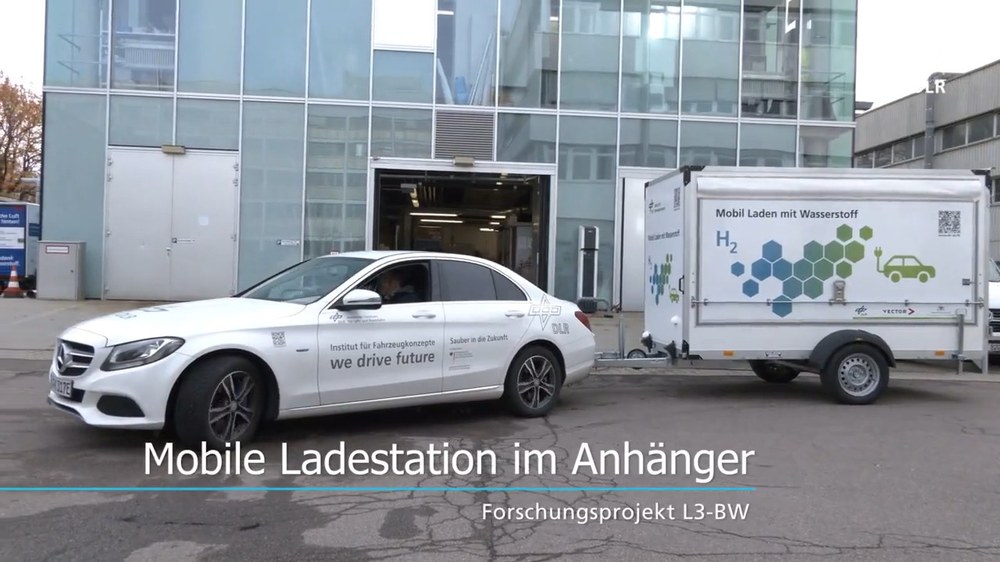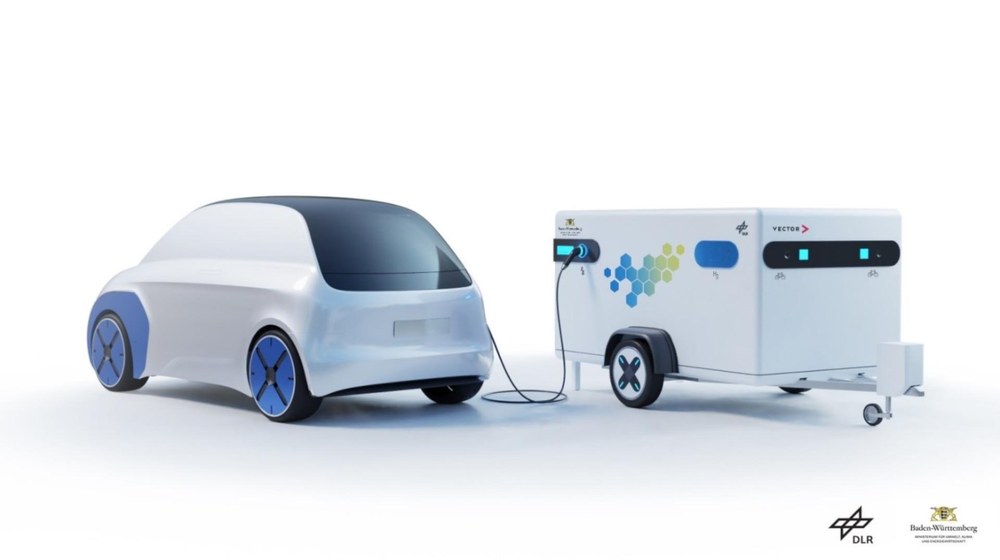Charging on the go without a power connection
Mobile charging stations can be used to improve the charging infrastructure for battery-powered electric vehicles across the board. Electric cars, e-bikes and even cargo bikes can be charged at the charging trailers. Rural areas in particular can benefit from this. "Mobile charging stations can be used in hiking parking lots and seasonal parking areas, for example, where a powerful grid connection is not possible or too expensive. The charging trailers can also be used on campsites, in ski resorts or at large events," explains Markus Kordel, head of the L3-BW project.
The DLR scientists are planning to equip the mobile charging trailers with LTE modules and GPS transmitters. This will make them easy to find using an app. The app also shows how much hydrogen is left in the trailer's tank - in other words, it also provides information about the charging capacity. "Mobile charging stations can even replace the diesel generators currently used for breakdown assistance if a vehicle breaks down with empty batteries," says Markus Kordel.



Loading trailers can be transported by car
The high-pressure tanks of the mobile charging station hold up to 3.5 kilograms of hydrogen. The fuel cell system uses this to generate the charging current. An average electric car can be charged for a distance of around 300 kilometers with one hydrogen filling of the trailer.
Operators and users can refuel the mobile charging station at any hydrogen filling station so that they are ready for use again within a few minutes. The charging trailers can be transported using a conventional car with a trailer coupling. For this reason, the mobile charging station weighs a maximum of 750 kilograms. "We had to find a compromise between charging power and the amount of hydrogen carried. The higher the charging power, the larger and heavier the fuel cell system becomes. However, we could then only install smaller hydrogen tanks. However, this would reduce the range of the vehicles. With eleven kilowatts of charging power, we have found a good value to optimize charging time and quantity," explains Markus Kordel. Thanks to an intelligent charging management system developed together with the company Vector, up to three vehicles can be charged at the same time.
The fuel cell system of the mobile charging stations has a modular design. This means that the technology can also be used in other areas. For example, the mobile charging stations can replace conventional generators with combustion engines. They are a powerful, environmentally friendly and quiet power source for countless applications. The DLR researchers are also preparing the certification of the mobile charging stations for road traffic.
Mobile charging stations relieve the power grid
The fuel cell technology of the charging trailers has another advantage: the hydrogen in the high-pressure tanks can store a large amount of energy for months. In addition, the mobile charging processes are independent of the power grid and do not place an additional load on it during peak demand. This means that mobile charging stations can supplement the charging infrastructure in a flexible way.
In the INPUT 2.0 program (intelligent network connection of parking lots and underground garages), the Baden-Württemberg Ministry of the Environment, Climate Protection and the Energy Sector is funding pilot projects to improve charging infrastructures in Baden-Württemberg with a total of 7.85 million euros. This also includes funding of 400,000 euros for the L3-BW project as part of the Baden-Württemberg automotive industry strategy dialog.

L3-BW („Laden, landauf, landab für Baden-Württemberg“) - Mobile Ladestation im Anhänger
Your consent to the storage of data ('cookies') is required for the playback of this video on Quickchannel.com. You can view and change your current data storage settings at any time under privacy.

